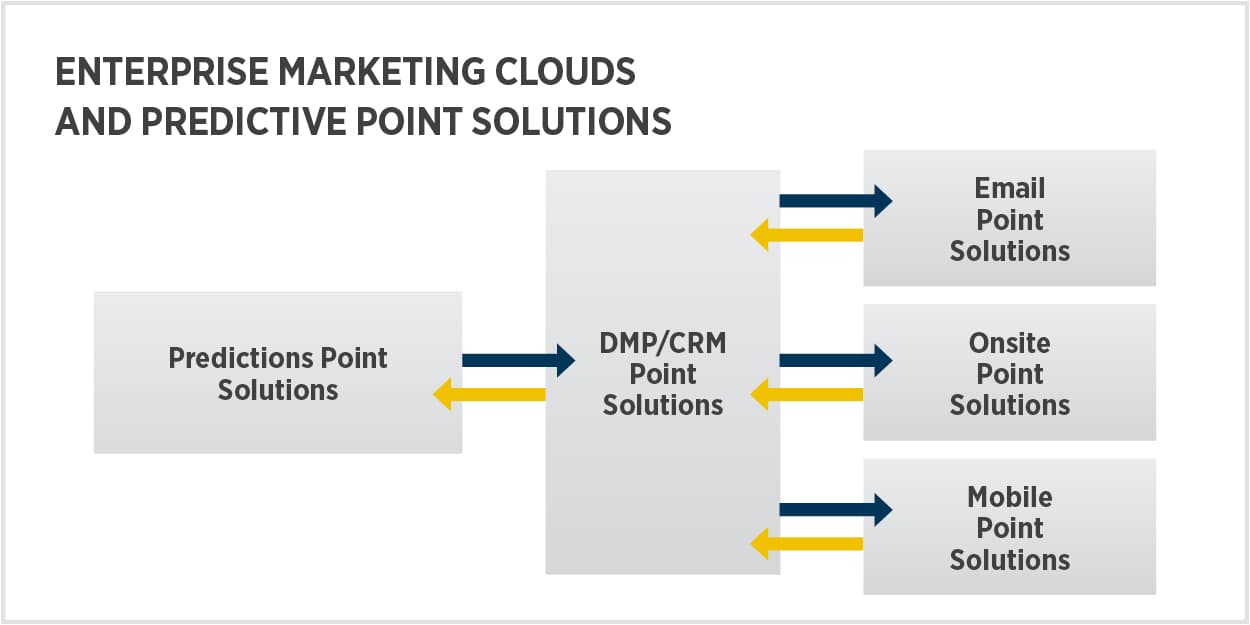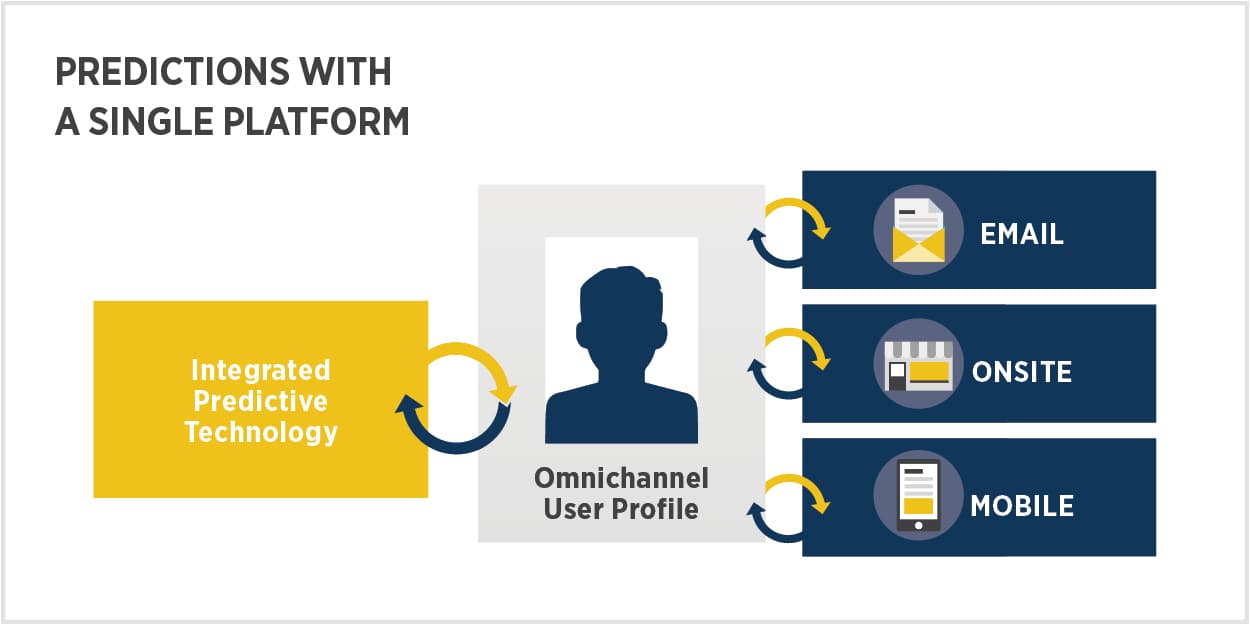Technology
The Technology That Powers Predictions Into Actions
June 12, 2015

This blog series is based on The Definitive Guide to Predictive Marketing, available for download now. Check out Part 1, and stay tuned for the installments to come!
Too much predictive intelligence works just fine until it bumps up against an actual customer. Then things start to get hairy.
That’s because too many marketers, instead of leveraging a single customer view fueling sophisticated marketing intelligence, are facing multiple data flows and disparate systems that claim to offer predictive capabilities, but are hamstrung by the way those systems are stitched together. If the data flows and systems weren’t designed from the ground up to work together, it can be unacceptably difficult to leverage even accurate and timely insights into effective customer engagement.
Individual point solutions for predictive technology rely upon segment-level exporting. They can’t make predictions at the individual level or in real-time. Marketing clouds have a similar problem. While marketing clouds are often sold under a single brand name, they have been assembled through acquisitions and are often made up of multiple, separate technologies, each with their own database.

In order to make predictive intelligence work, marketers should use a single platform for data collection, marketing automation, and predictions. Because such a platform enables marketers to minimize data flows, predict behavior at the user-level, and automate optimization, a marketer using such a system can impact consumer behavior on a daily basis and dramatically increase revenues.

If you’re talking to predictive technology vendors, we’d suggest you ask the following questions.
• Do you offer a single platform solution for data collection, marketing automation and predictions?
• Are predictions actionable at the individual user level or only at the segment level?
• How many data flows are needed to leverage predictions in specific channels, such as email?
Get the right answers to these questions, and there’s a good chance the promised predictions are going to be timely, targeted, and make a real impact.
–Neil Capel, Founder and Chairman of Sailthru
The State of Brand Loyalty in the U.S. in 2023
Related



